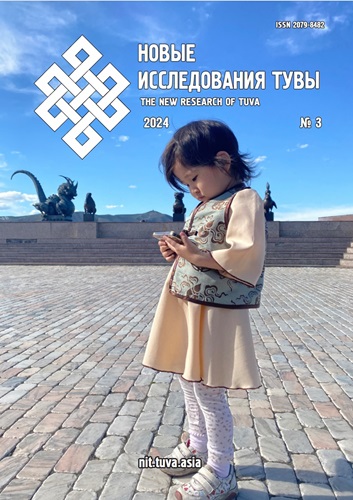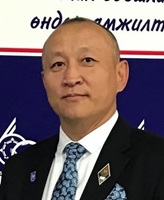Проблемы физического развития монгольской молодежи
DOI:
https://doi.org/10.25178/nit.2024.3.19Ключевые слова:
студент; физическое воспитание; спорт; спортивный менеджмент; МонголияАннотация
На начальном этапе исследования мы поставили цель изучить современные тенденции физического воспитания в Монгольском государственном университете науки и технологий посредством анализа и сравнительных оценок. В результате наблюдается преобладание следующих подходов к обучению: в Великобритании — комплексное образование, в Австралии — образование, основанное на техническо-технологическом прогрессе, в Японии и Китае — счастливое спортивное обучение, а в Монголии — обучение умениям и физической культуре. В ходе анализа было отмечено, что в Монголии отсутствуют установки к обучению физкультуре. Была определена степень его эффективности посредством тестового исследования.
Одной из основных задач нашей работы является изучение проблемы физического развития монгольской молодежи в прошлые годы.
В статье представлены результаты данного не имевшего аналогов тестирования физической подготовки первокурсников Монгольского государственного университета науки и технологий, поступивших с 2008 по 2018 год. При этом был использован «Тест для определения уровня физического развития и подготовки населения», который был назван в честь Президента Монголии господина Цахиагийна Элбэгдоржа и внедрен на национальном уровне.
В процессе тестирования рост, вес, скорость, сила и гибкость учащихся проверялись с помощью двигательного теста. Тест оценивался по утвержденной методике, в результате чего с использованием количественных и статистических методов исследования была проведена проверка достоверности критериев каждого опросника и полученных данных, а также проанализирована корреляция факторов. Что касается уровней физического развития учащихся, то 14% имели низкие результаты, а 44% — недостаточные. Физическое развитие большинства участников (58%) было оценено ниже достаточного уровня (17 баллов), который должен быть у человека этого возраста. Что касается гендерного распределения, то 53% учащихся мужского пола и 65% учащихся женского пола имели недостаточное физическое развитие.
На основе данных социологического анкетирования студентов было определено, что 58,1% не занимались активно физкультурой и спортом. Данный результат совпадает с полученными данными о том, что 58% всех участников тестирования имели недостаточное физическое развитие.
По данным нашего исследования, большинство монгольских студентов и молодых людей имеют слабую физическую подготовку, а у каждого из шести студентов имеется проблема с весом, что может свидетельствовать о том, что подход к преподаванию развития навыков и физического воспитания несколько неэффективен.
Теоретическая и практическая значимость исследования заключается в том, что можно определить современное состояние физического развития студентов и молодежи, использовать результаты в качестве основы для разработки детальной политики и решений по развитию физкультуры и спорта среди молодых людей.
Сегодня, поскольку студенты и молодежь являются наиболее важным сегментом населения для социоэкономического развития Монголии, важно построить здоровую нацию посредством поддержки физической культуры и спорта, доступных для всего населения.
Библиографические ссылки
Опубликован
Как цитировать
Для цитирования:
Bat-Ochir M., Munkhnasan B., Battuvshin G. Issues of physical development among the Mongolian youth // Новые исследования Тувы. 2024. № 3. С. 314-325. DOI: https://doi.org/10.25178/nit.2024.3.19
Выпуск
Раздел

Это произведение доступно по лицензии Creative Commons «Attribution-NonCommercial» («Атрибуция — Некоммерческое использование») 4.0 Всемирная.

Автор (лицензиар) произведения предоставляет простую (неисключительную) лицензию на использование редакцией (лицензиатом) произведения науки, который заключается в упрощённом порядке (открытая лицензия), согласно ст. 1286.1. «Открытая лицензия на использование произведения науки, литературы или искусства» Гражданского кодекса Российской Федерации.
В нашем издании публикуемые материалы доступны по лицензии Creative Commons «Attribution-NonCommercial» («Атрибуция — Некоммерческое использование») — CC BY-NC.
Т. к. лицензия открытая, автор имеет право разместить статью после ее выхода на своем сайте, читатель может скопировать и разместить на своих персональных ресурсах, в том числе в виде выдержек, конспектов, но:
а) обязательно должно быть указано ФИО автора, неизмененное название статьи и гиперссылка на первоисточник (журнал «Новые исследования Тувы»),
б) размещающий не имеет права брать деньги за доступ к этому материалу или каким бы то ни было образом давать преимущество одним читателям над другими,
в) при перепечатке автором текста статьи без значительных изменений (если сохраняется 30% текста или более) должно быть указано, что первая редакция статьи вышла в журнале «Новые исследования Тувы» и сделана соответствующая ссылка.
Лицензия действует по всему миру, длится в течение срока авторских прав на произведение, является неотзывной.











